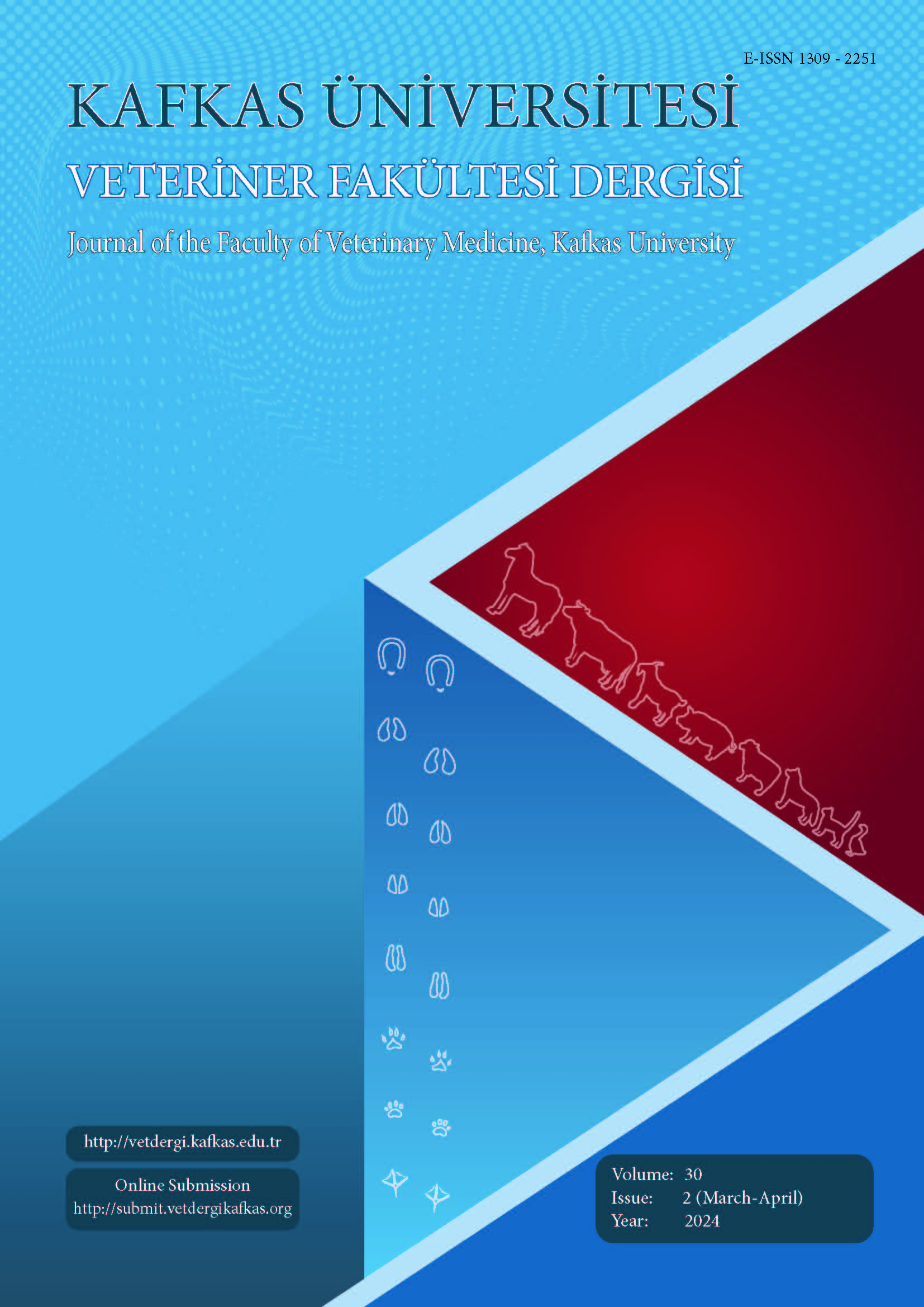
This journal is licensed under a Creative Commons Attribution-NonCommercial 4.0 International License
Kafkas Üniversitesi Veteriner Fakültesi Dergisi
2024 , Vol 30 , Issue 2
Morphological and Molecular Characterization of Mucormycosis and Other Fungal Agents in Cattle
1University of Ondokuz Mayıs, Faculty of Veterinary Medicine, Department of Veterinary Microbiology, TR-55220 Samsun - TÜRKİYE2University of Adnan Menderes, Faculty of Science, Department of Biology, TR-09020 Aydın - TÜRKİYE
3University of Tekirdağ Namik Kemal, Faculty of Veterinary Medicine, Department of Internal Medicine, TR-59030 Tekirdağ - TÜRKİYE
4University of Tekirdag Namik Kemal, Faculty of Veterinary Medicine, Department of Veterinary Microbiology, TR-59030 Tekirdağ - TÜRKİYE DOI : 10.9775/kvfd.2023.30958 Mucormycosis is a type of opportunistic fungal infection caused by the Mucorales order of Zygomycetes. The study"s goal was to characterize Lichtheimia and other fungal agents in Tekirdağ province of Türkiye by morphological and molecular methods. Head hair and skin scrapings of 13 cattle with mucormycosis lesions inoculated onto Rose Bengal Agar, Potato Dextrose, and Malt Extract Agar. After the incubation at 25°C and 27°C, pure colonies were evaluated morphologically and microscopically. For molecular identification, DNA isolation and PCR studies were followed by sequence analysis and the results were compared with the data in GeneBank using the nBLAST tool. ITS1/ ITS4 primers used in PCR study. Fungal species were identified with data verified after morphological and molecular identification. The sequence analyses revealed that 12 samples had L. ramosa HBF570, 7 samples contained A. niger HBF572 and P. crustosum HBF571, 2 samples contained A. chevalieri HBF573 and A. flavus HBF576, and one sample contained A. pseudoglaucus HBF577 and Aspergillus sp. HBF570. The study"s causative agents emerged were environmental fungus species. In conclusion, because of the fungal diversity in the environment, hygiene investigations must be conducted and implemented for the protection of mucormycosis. Keywords : Cattle, Lichthemia ramose, Mucormycosis, Sequencing










